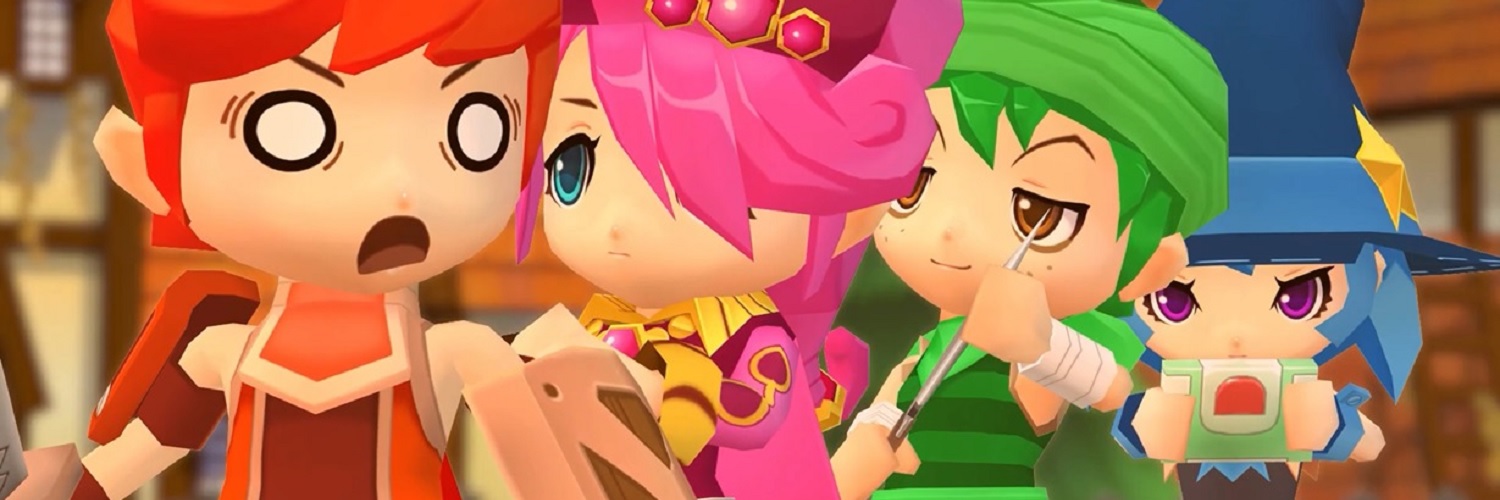
Dokapon Kingdom: Connect Switch Review
Dokapon Kingdom: Connect is a niche party board game/role-playing game hybrid, think Mario Party meets Dragon Quest. This release is a remaster of the game Dokapon Kingdom, which initially came out in English in North America for PlayStation 2 and Wii. This was at a time when the PlayStation 2 was on its dying legs in 2008, so having a Wii release as well, a console that was in demand for many years, made total sense. For us European folks, it did not hit here until 2010; only the Wii version made it to our shores, which is an understandable decision, as by that point the PlayStation 2 was long living in the grave as its successor, the PlayStation 3, was already past its three-year birthday.
With Nintendo’s Switch setting itself as the console for couch multiplayer fun, Dokapon Kingdom: Connect is an ideal candidate for such a release on the system. While the core game remains the same as the original release back in 2008, this Connect version brings with it an update to high-definition output, which gives the visuals a clear and sharp upgrade. It keeps the same 3d models from the original release, so do not expect visuals on par with some of the best on the system, but that added clarity running at 1080p helps those old Wii visuals look better than its original release in standard definition. That said, there are some quirky presentation issues, such as the player turn notification staying on screen during actions, cutscenes or at the end of the week’s summary until the confirmed button is pressed.
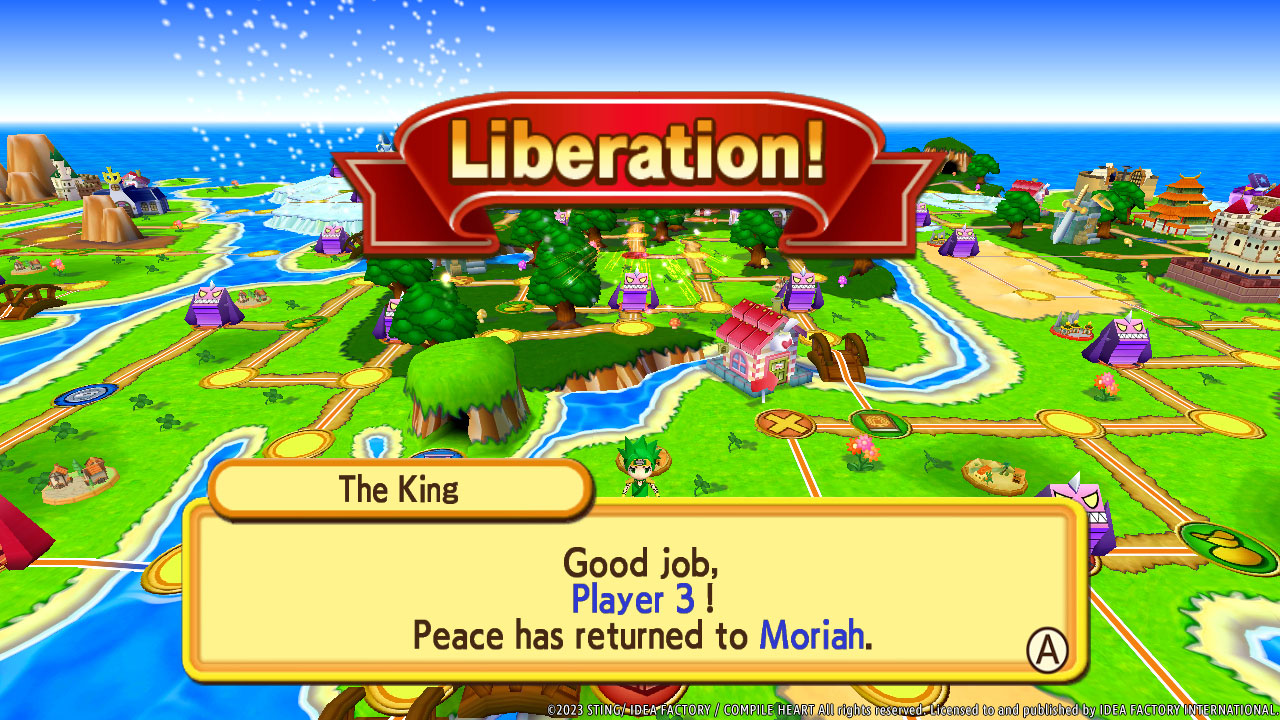
The other big advantage of the Connect version is the ability to play the game online with up to three other people, which is perfect, as some modes in Dokapon Kingdom: Connect can last for hours. If everyone cannot get around to a house and all be in front of one Switch device, then it makes sense for everyone to grab a copy of the game and play online. The reason to do this is that online and offline save files are separate, so taking it online to get through the lengthy 18+ hour story mode is a great idea. It even allows players to turn themselves into CPU players if they need to do something and want their friends to keep playing. Another great thing is that in the online mode, up to three people can play on one Switch console, which I cannot explain how amazing a feature that is. This means me and my friend can play against my brother and his girlfriend online when we want to battle it out on some party game RPG shenanigans.
I have just covered the new features of this release without going through exactly what the core of Dokapon Kingdom: Connect is. The concept is taking the randomness of a board game and mixing it with role-playing game elements. The setting is one of fantasy in the Kingdom of Dokapon. This was once a calm, peaceful kingdom, but out of the blue, monsters began attacking towns, causing people to lose their homes. This was not good for the King, because he was no longer getting income through his taxes, as no one could afford to pay. What better way to solve this than by offering a reward to any heroes willing to help. The reward? To be the next king in line to the throne and to have the princess’ hand in marriage. A stereotypical fantasy story, but one that sets up a concept to get people to befriend or betray players on the way to become the winner of the prize by defeating the evil and earning as much money as possible, because in this game, money means winner, just without the tiger blood.
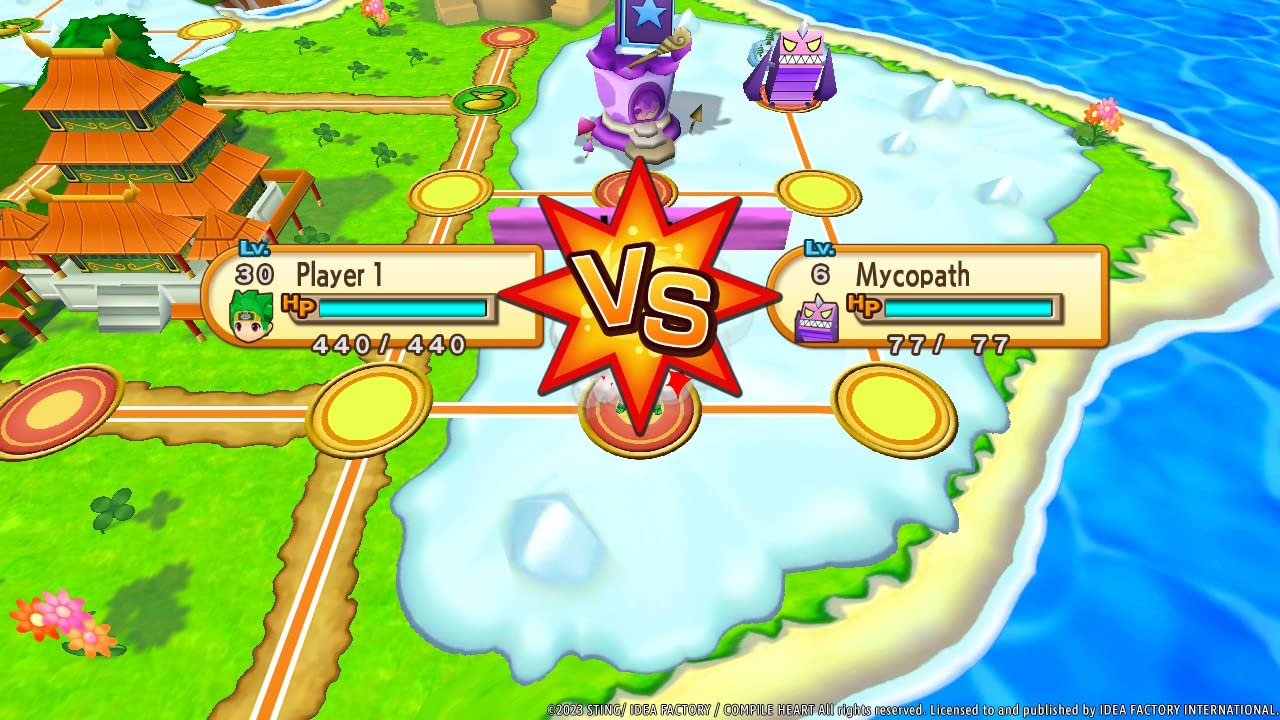
At the start of every game, players need to create an adventurer, up to 2-4 players can be in a session and this can be a mix of human and CPU. The adventurer creation is as basic as one can be. It involves giving the character a name, picking its sex, clothing colour and facial expression from a tiny pool to select from. There is also the class selection, which offers one of three roles: Warrior, Magician and Thief. Quite self-explanatory classes with nothing standing outside of the norm. Warrior has good attacking and defence abilities, the Magician focuses on magic elements, while the Thief is good for speed and stealing items from other players with their class’ skill. More classes are available, dubbed jobs, as these are earned during the gameplay to add a bit a spice to the basic class skills and stats.
The story is the biggest mode of Dokapon Kingdom: Connect, as it takes the players through a prologue and eight chapters, each one representing a quest that needs to be completed and sending a player to another section of the map. In terms of a digital board game setup, players, in the beginning, are given an ordered movement, and then each player on their turn will spin a roulette with the numbers 0-6 representing the spaces they will move on the board. The board has various elements, such as bags, chests, shops, and other icons that present finding an item or weapon, and again, these are done by chance by stopping the moving highlighter on a description and earning that reward. They may also be actions or random events that will appear on specific spaces as well.
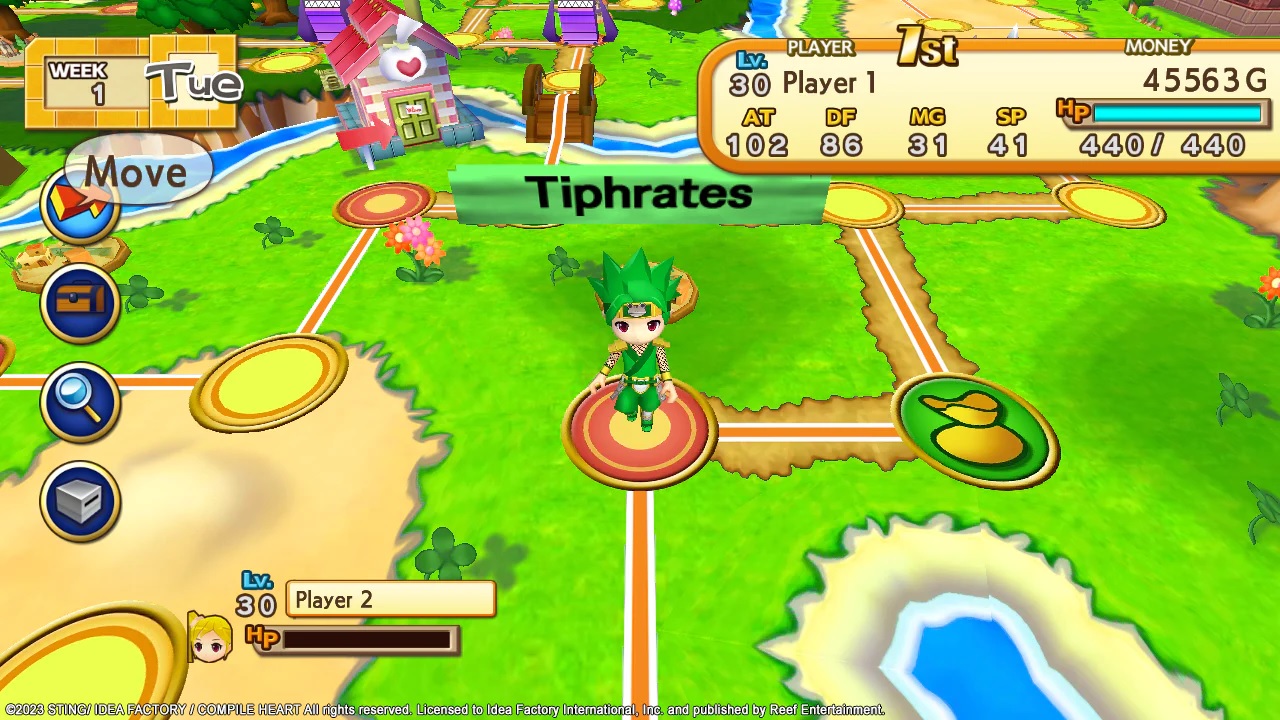
Blank spaces are one of the main actions on the board, as these initiate a battle sequence where the player picks a card that will determine if they go first or second with their actions, and then each side does one action each for each turn. The first person performs the offensive action and the second person performs a defensive action, then it flips roles for the second person to attack. This keeps happening each roulette roll turn on the player character until someone defeats the opponent or decides to give in. This leads to gaining experience and money, with a level-up system in place to unlock better stats through both automated and manual skill point assignments. Any death from battle does not mean the end of the game, as that player will just skip a turn or two and then resurrects back at the Castle or the last major area visited.
Battles are straightforward, more so at the beginning where everyone has basic moves and items, but as the game progresses over its weeks and across its multiple chapters as characters level up and gain more moves and gear. The strategy begins to enter the equation trying to out pick an enemy based on spells and skills but making sure they do not counter-pick on their side, such as picking “Defend” for a normal attack or “Counter” for a “Strike” attack, which is a move that deals way more damage than a normal attack if it manages to hit, but has less chance of hitting than the default attack. Battles follow a familiar rock-paper-scissor system to keep things easier to understand without going too deep into the game’s spells and skills.
An amusing feature is that if the battle has been won by the player and another player spins and moves to the same place as the first player was on, they will then battle each other. The same outcome can apply here, so if a player beats another player, they will die and have some of their stuff taken by the winner. If the losing player wants to give in instead of losing turns to the death penalty, they can surrender, but this still counts for a win for the player, giving them the option to take your gold, items or equipment. The winner also can decide to be a bit of a dick and rename the character or change the losing character model’s hairstyle, just to add more insult to injury for the loser. Breaking friendships is something that happens with these games. It is the same with Mario Party, where friends become enemies when their aim is to win. With Dokapon Kingdom: Connect, there is that element that playing with friends is much better than the CPU, because you form alliances with buddies, but as soon as their worth is void, the backstabbing commences to get the upper hand. The human element of betrayal is what makes the difference between playing with CPU and friends. Sure, the CPU offers a decent experience, but it is rather straight to the point and will try to punish the player as much as possible, a merciless AI if they are set above anything other than the lowest difficulty. The CPU has none of that unknown on how a friend is going to behave in a scenario, which takes some of the diabolical treacherous fun out of the equation and makes it more straight to the point.
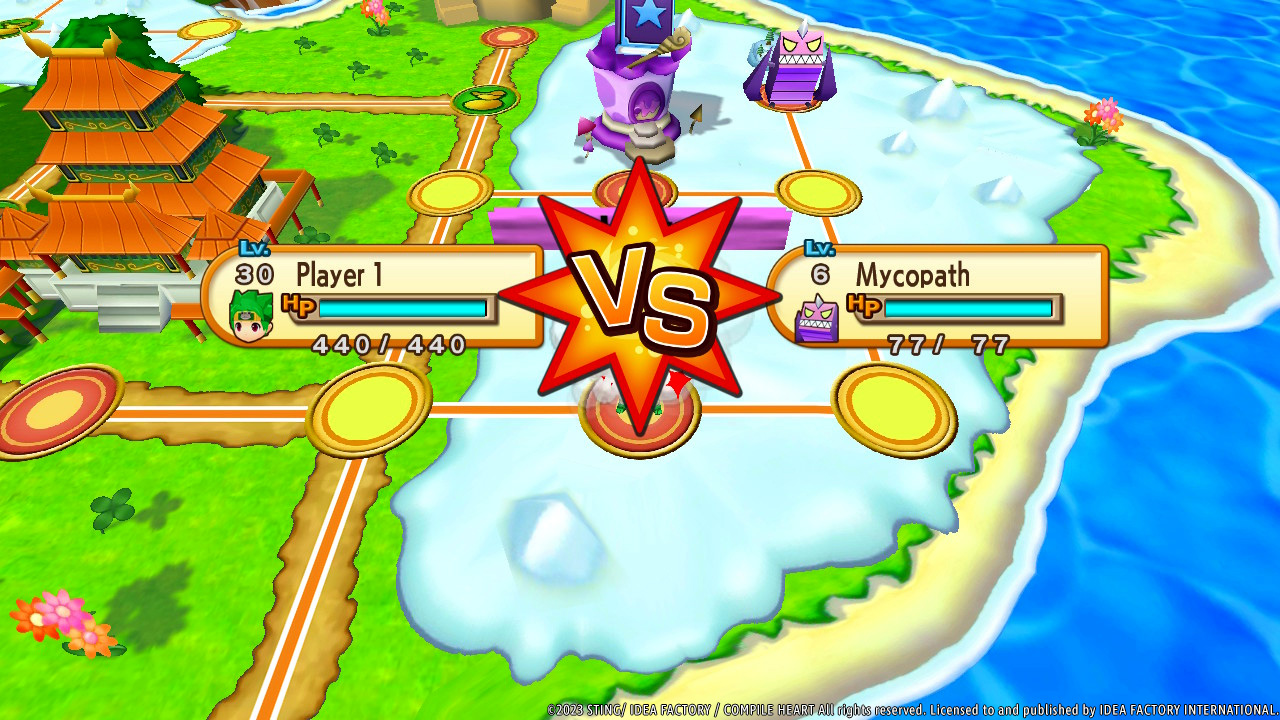
Another thing to make a note about the game is that there is only one, albeit a very large one, map. This map is a world, so is split into continents, with a new continent opening when moving the story onto the next chapter. Each section has plenty of board spaces for battles, shops and events, but one thing key to winning is towns. Initially, towns are under threat from a monster. Kill this monster and the town becomes yours, giving you a nice lump some of weekly cash that gets added to your gold score at the end of each week. Remember that winning is done by having the most gold, and so killing a few monsters and taking over the towns is a superb way to build up huge gold numbers. Towns help gain the owner (player) income, and so they can also be invested in to increase their level and gain more gold, but they can be taken back by other players using a charm potion, an expensive item that will convert the town ownership. It is all very scheming in the world of Dokapon Kingdom, and you know what, I am so down for it. If that makes me a bastard for scheming on my friends, then so be it! It’s all in good fun at the end of the day.
Outside of story mode are where the more traditional length board game modes sit. There is Normal mode, which can determine how many weeks a game should last from a range of 1-999 (how many hours would the latter last?!?!) and what level players can start at from the Dokapon Castle. The aim here is to go around and kill all the big monsters and net the large cash reward. The other mode is Battle Royale, which features three types, Town Race (liberate a town to win), Kill Race (Kill a certain number of times) and Shopping Race (bring a key item back to the requester). These modes help squash some of the lengthy repetitiveness that comes with the story mode by playing shorter games that can last how long you want them to. These other modes are suited for people who do not play many video games, as it cuts down a little of the learning curve, which can be steep for novices. The game’s mechanics and strategies may take some time to fully grasp, but once everything clicks it becomes more engaging for the players.
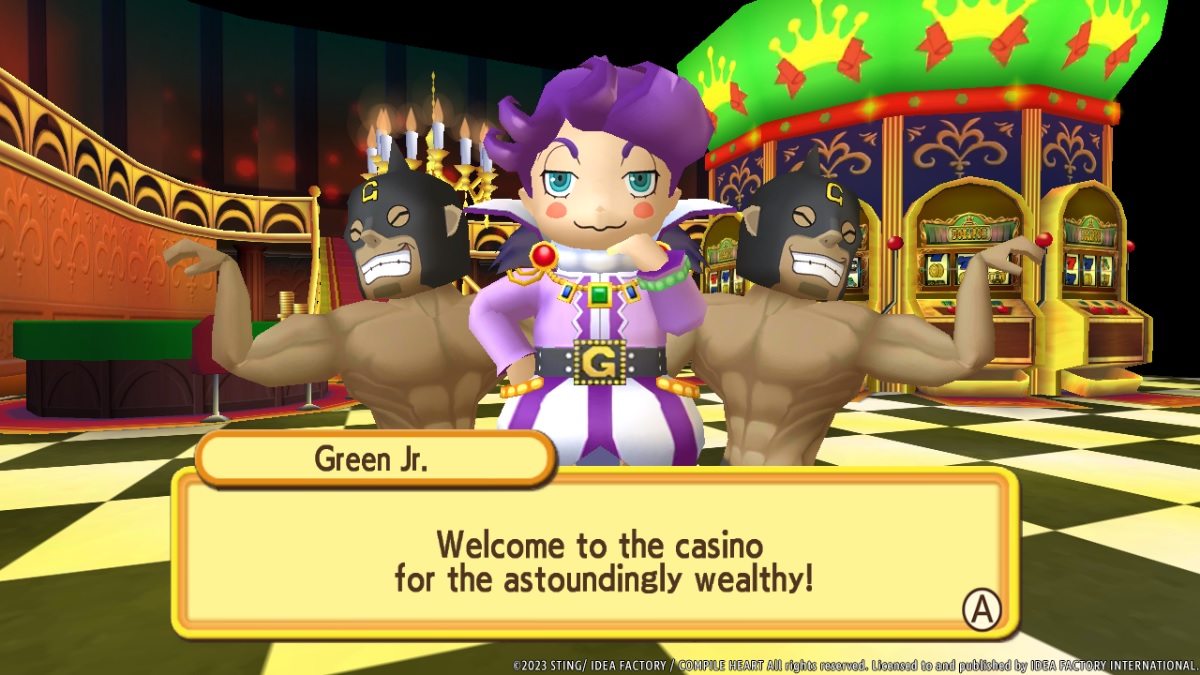
Dokapon Kingdom: Connect is no doubt a very niche title that can offer some captivating scenarios and treacherous betrayals between friends. It brings a different twist to the Party board game formula with the inclusion of crossing it with some baby role-playing game mechanics. It totally feels like a game extracted from the PS2 era, with its quirky dialogue and wacky concept, but it does manage to work. The slight problem it has is that unlike Mario Party, where those games can be over in 30 – 60 minutes, this game requires people willing to commit to lengthy time slots to get the best out of it, which is not always ideal. Dokapon Kingdom: Connect might lure some of those Mario Party fans across, but the game feels more aimed at finding its own small audience who love the idea of a video game that blends RPG mechanics with a board game in a decent way. If you are one of those, then get ready to embark on a long adventure filled with friendly banter and devilish competition to be the richest person in the land.
